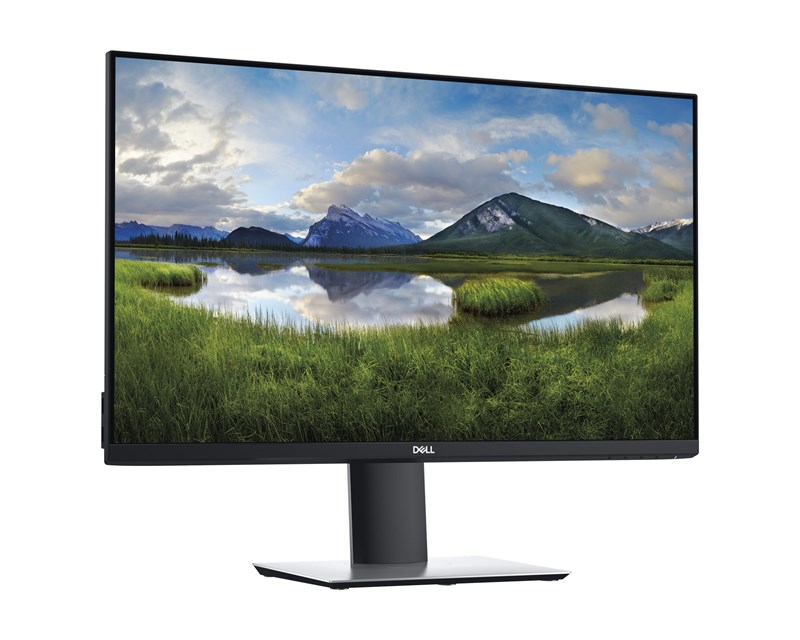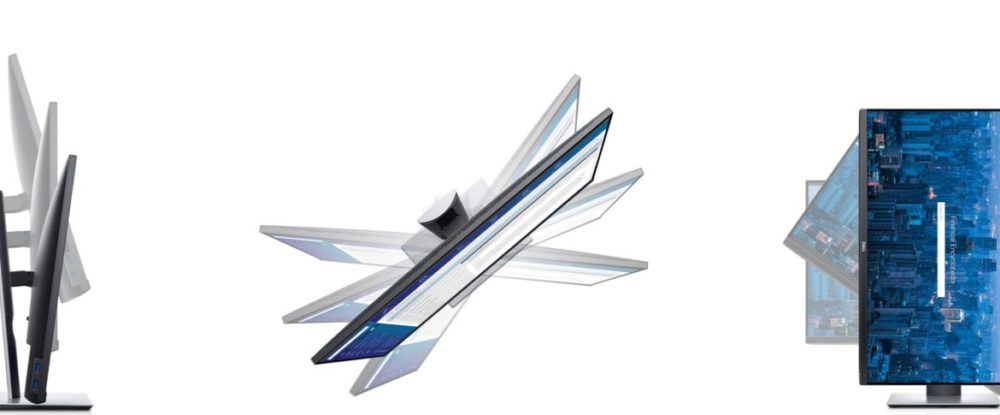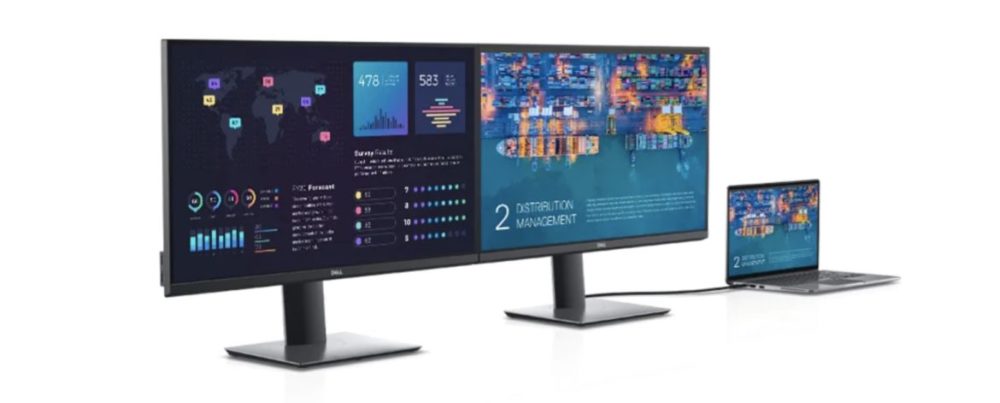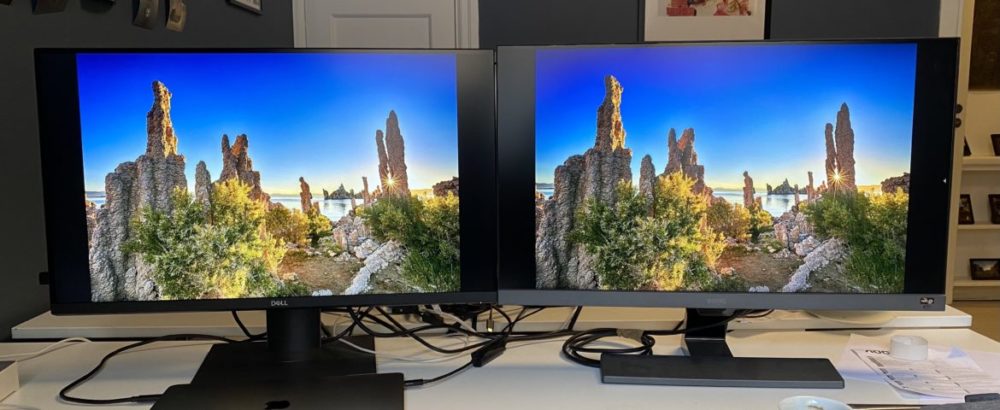TL;DR
Remote work is here to stay, and a solid monitor setup is key. Dell's P2720DC monitor is a fantastic option for professionals, boasting a crisp 27-inch QHD display, excellent color accuracy for work tasks, and a highly adjustable ergonomic design. Its standout feature is the convenient USB-C connectivity, allowing for a single-cable setup that powers your laptop and transmits video. Plus, daisy-chaining capabilities offer flexible multi-monitor setups. While it's not a gaming powerhouse, it delivers a great picture for everyday office use. Discover why it's become our new go-to office monitor.
A high-quality work monitor, complemented by a reliable webcam, is becoming increasingly essential. While COVID-19 vaccination efforts progress, the shift towards remote work is likely to remain a significant trend. Whether it’s a full-time arrangement or a hybrid model, companies are recognizing the advantages of remote work, including reduced office space costs and decreased maintenance expenses. Moreover, beyond the desire for larger homes, the elimination of commutes offers substantial time savings.

Dell, a well-known American company, is recognized for its computers, but the brand has consistently been favored for its monitors at our editorial office. We have used Dell models as reference displays for years. While the Dell Ultrasharp U2719DC was a competent monitor, its price point was somewhat elevated relative to its features compared to competing products. Therefore, the arrival of the Dell P2720DC, featuring USB-C connectivity, Power Delivery, and a sub-SEK 4,000 price, piqued our interest.
The design adheres to Dell’s classic aesthetic: sleek, with slim bezels and a professional appearance, aligning with expectations for a modern office environment. The monitor’s stand is easily assembled, allowing for precise adjustments to height and angle. This adjustability is particularly beneficial in environments with varying sunlight conditions or when optimizing webcam positioning for improved eye contact during video conferences.

A key advantage of the Dell P2720DC is its support for daisy-chaining two monitors via a single cable. This feature is highly valuable for users who manage multiple windows for web browsing, email, spreadsheets, and applications like Spotify. Gamers can also leverage this functionality to run games on one screen while using the other for communication platforms like Discord.

The Dell P2720DC features a 27-inch, LED-backlit LCD panel with QHD resolution, which equates to 1440p (2560×1440). This is a standard resolution for monitors in this price range and is generally sufficient for most work-related tasks. While not as sharp as 4K, which we will be reviewing shortly with a higher-priced reference model, it offers a good balance. The IPS panel technology delivers excellent color accuracy, although it typically results in lower refresh rates, usually capped at 75Hz. The P2720DC aligns with this, providing vibrant colors but a 60Hz refresh rate, making it less ideal for gaming applications that benefit from 144Hz displays.
Convenient USB-C
The inclusion of Power Delivery (PD) allows for single-cable connectivity (in addition to the power cable). With a modern computer, a single USB-C cable can deliver 65W of power, simultaneously transmitting video and charging your laptop. This feature is particularly convenient for users who frequently move their laptops between locations.
Connectivity options also include two DisplayPort connections (one 1.2 and another for daisy-chaining) and an HDMI 2.0 port for connecting various devices. As expected in this price range, HDMI 2.1 is absent, meaning modern consoles like the PS5 and Xbox Series X can be connected, but without features like VRR and 120fps support. Four USB ports are available: two USB 3.0 and two USB 2.0. While we often criticize Panasonic for rear-facing connections on their OLED TVs, the P2720DC places all connections (except USB) in a recessed, downward-facing configuration. Although perhaps less aesthetically pleasing than outward-facing ports, this design can be less practical, especially when the monitor is positioned against a wall.

Image Quality of the Dell P2720DC
The most critical aspect: image quality. The Dell P2720DC delivers a very good picture. Lacking HDR support, the maximum brightness reaches approximately 250 cd/m2, which is adequate for general office use but not optimal for viewing modern (4K) UHD HDR movies at their best. Color accuracy is a strong point, with close to 100% sRGB coverage, over 78% Adobe RGB, and around 83% DCI-P3, a more modern color space for digital rendering. Overall, the monitor performs well across various metrics, although a higher brightness level would be preferable.
To provide a comparison, here’s the Dell P2720DC positioned next to our previous office reference, the BenQ277HDR:

The difference is subtle, but noticeable. Both monitors produce good colors, but the Dell P2720DC exhibits enhanced clarity due to its higher resolution and improved posterization (smoother transitions between color shades in detailed areas). The P2720DC is also slightly more expensive than the BenQ277HDR, which offers limited HDR support that boosts brightness. The P2720DC features an effective anti-glare filter, minimizing the impact of sunlight, which can be problematic with some window configurations.
As this monitor is primarily intended for work and office use, it does not include built-in speakers. However, this can be easily addressed using your computer, ideally with a Bluetooth speaker, or for users seeking excellent and compact audio, a high-quality portable speaker.
Summary: Dell P2720DC
We were favorably impressed with the Dell P2720DC. For a price just under SEK 4,000, it offers a capable and intelligent monitor for professional use. Its vivid colors, ergonomic design, and exceptional USB-C connectivity for both image and charging make it our new office monitor reference at the senses editorial office.
We now look forward to a successor with slightly increased brightness and, perhaps, HDR support.
